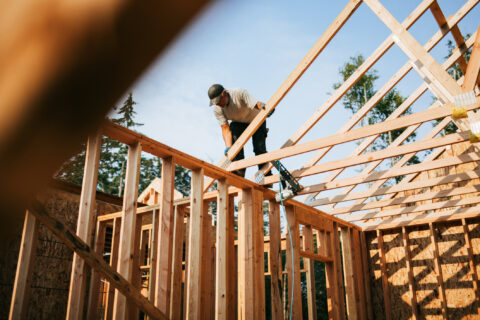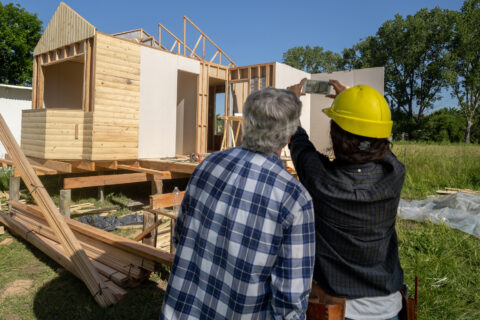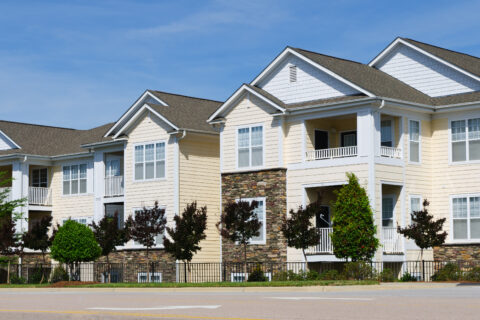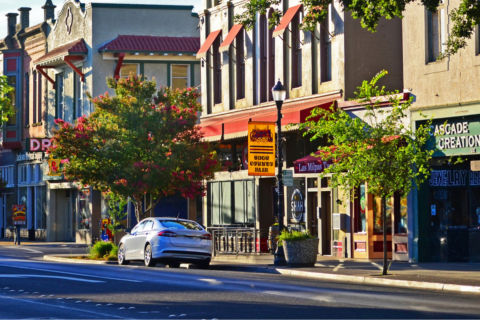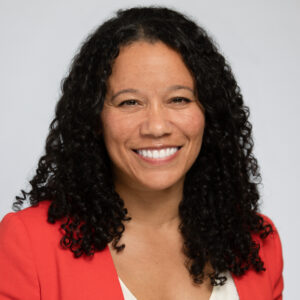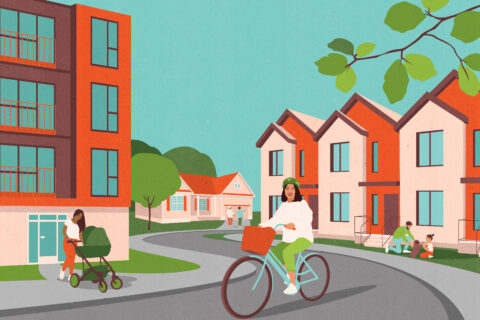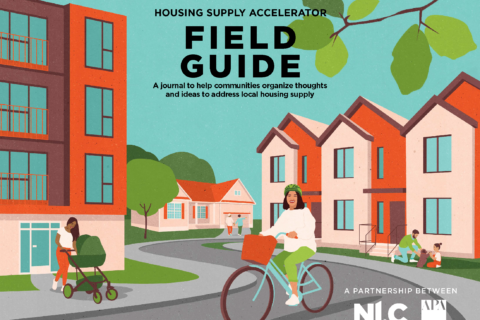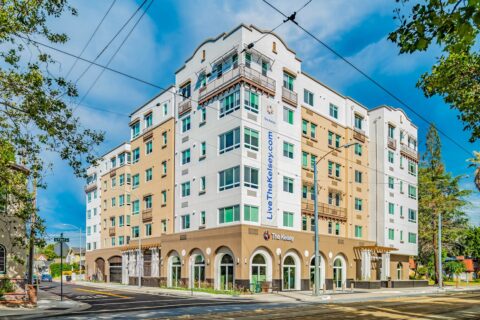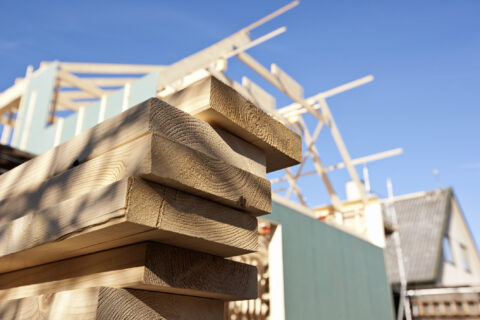Authored by Willie Franklin, Assistant Director of Planning and Development, City of Dallas; Chalonda Mangwiro-Johnson, Manager, Public Information, City of Dallas; and Kamil Miskowiec, Senior Architect, City of Dallas
On April 23, 2025, the City of Dallas unanimously approved a transformative ordinance aimed at tackling the city’s future housing crisis by unlocking the potential of “missing middle” housing. The newly passed “1 to 8 Dwelling Units” ordinance allows buildings of up to eight units and three stories to be permitted under a modified version of the International Residential Code (IRC). This change revises the city’s “Dallas One- and Two-Family Dwelling Code,” which previously limited the use of residential building codes to developments with just one or two dwelling units.
By enabling up to eight dwellings to follow the simpler and more cost-effective residential code, rather than the more complex International Building Code (IBC), Dallas is clearing a major hurdle for small-scale housing developers and helping address a significant need for more affordable housing options.
Why This Matters: A Response to the Housing Shortage
This ordinance marks a bold and progressive shift in how Dallas approaches small-scale housing development. Like many major cities, Dallas faces a worsening housing affordability crisis. Prices are rising and many residents — especially low- and moderate-income families — are being priced out. This ordinance provides an option between single-family homes and large apartment complexes, and creation of walkable neighborhoods.
According to the November 2024 City of Dallas Housing Action Plan (PDF), as housing costs continue to outpace growth in household income in Dallas, the cost burden is affecting more households in mid-range income levels, assessing homeownership is becoming increasingly challenging and there continues to be a shortage of affordable rentals. Dallas is projected to gain nearly 68,000 net new households by 2033, raising the total number of Dallas households by 589,000. To meet this demand, the housing market will need to deliver roughly 6,800 new homes annually.
To meet this growing need, the diversity of its housing stock must be expanded. The adoption of this ordinance signals the city’s recognition that increasing density — through small-scale, neighborhood-friendly and “fitting the character” development — is essential for a more affordable and inclusive future.
Aligning Adopted City Policies
The passage and support of this ordinance also reflects the continued commitment of Dallas elected officials and staff to previously adopted city policies. Over the past several years, the City of Dallas has adopted policies that all emphasize the importance of address housing including:
- Dallas Comprehensive Environmental & Climate Action Plan (PDF), adopted in May 2020
- Racial Equity Plan, adopted in August 2022
- Dallas Housing Policy 2033, adopted in April 2023
- Forward Dallas 2.0, adopted in September 2024
Breaking Down Barriers to Building
Prior to this ordinance, builders constructing triplexes, fourplexes or other small multi-unit housing had to comply with commercial building codes typically reserved for large-scale developments. This meant incurring significantly higher costs due to commercial-grade fire systems, structural engineering requirements and additional design and consulting fees — costs that duplex projects could avoid.
The complexity and expense of the commercial code often made smaller infill developments financially infeasible. Builders were forced to walk away from projects that could have filled the missing middle gap. Now, with the adoption of this ordinance, developers can design and build up to eight units using the less expensive and more accessible residential code — dramatically improving the financial feasibility of these projects and paving the way for more diverse housing choices in Dallas neighborhoods.
What the Ordinance Allows
Consolidated Dwelling under the new ordinance:
- Buildings may include 3 to 8 dwelling units
- Structures can be up to three stories
- The maximum total floor area is 7,500 square feet without a fire sprinkler system
- A maximum of 4 dwelling units per floor
- Buildings may have a single interior exit stairway
- Multiple buildings may be permitted on a single lot, provided the buildings comply with zoning regulations
- Projects will follow an amended version of the International Residential Code
How it Happened: A Collaborative Effort
This ordinance is the result of a collaborative effort. The idea originated in 2023 with the Dallas City Council. The proposal then gained momentum with a change in leadership at the Dallas Planning and Development Department.
Best practices were researched and a working group convened, consisting of Dallas Fire Department, local architects, developers and contractors. Local organizations such as American Institute of Architects of Dallas (AIA) provided input and City of Dallas Building Inspection Advisory, Examining & Appeals Board (BIAEA) provide recommendations which were included in the final ordinance.
The working group prioritized life safety while seeking practical ways to remove regulatory barriers. Their work was grounded in best practices from other cities and informed by local experience. The resulting ordinance reflects a thoughtful balance between innovation, life-safety and affordability.
A Milestone for Dallas
The passing of the “1 to 8 Dwelling Units” ordinance (PDF) is a major milestone in Dallas’s commitment to address the housing needs in Dallas. By enabling more flexible, affordable and diverse housing types, Dallas is creating a more inclusive future for all residents — one where smaller-scale projects can thrive, and more families can afford to call Dallas home.
Filling the Gap Tool: Unlocking Housing Finance
Lack of funding is often the biggest hurdle for housing development projects. Use NLC’s Filling the Gap tool to pinpoint location-specific funding sources and streamline the process of closing the funding gap for affordable housing projects in your community.


